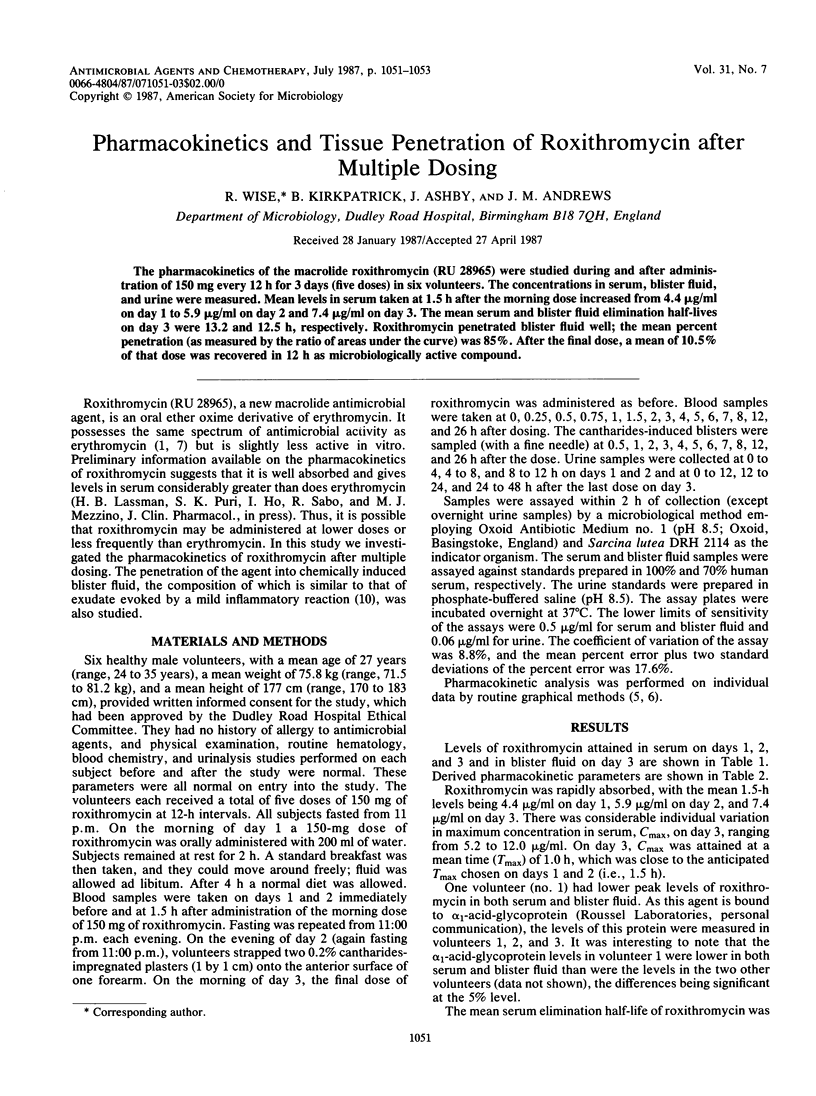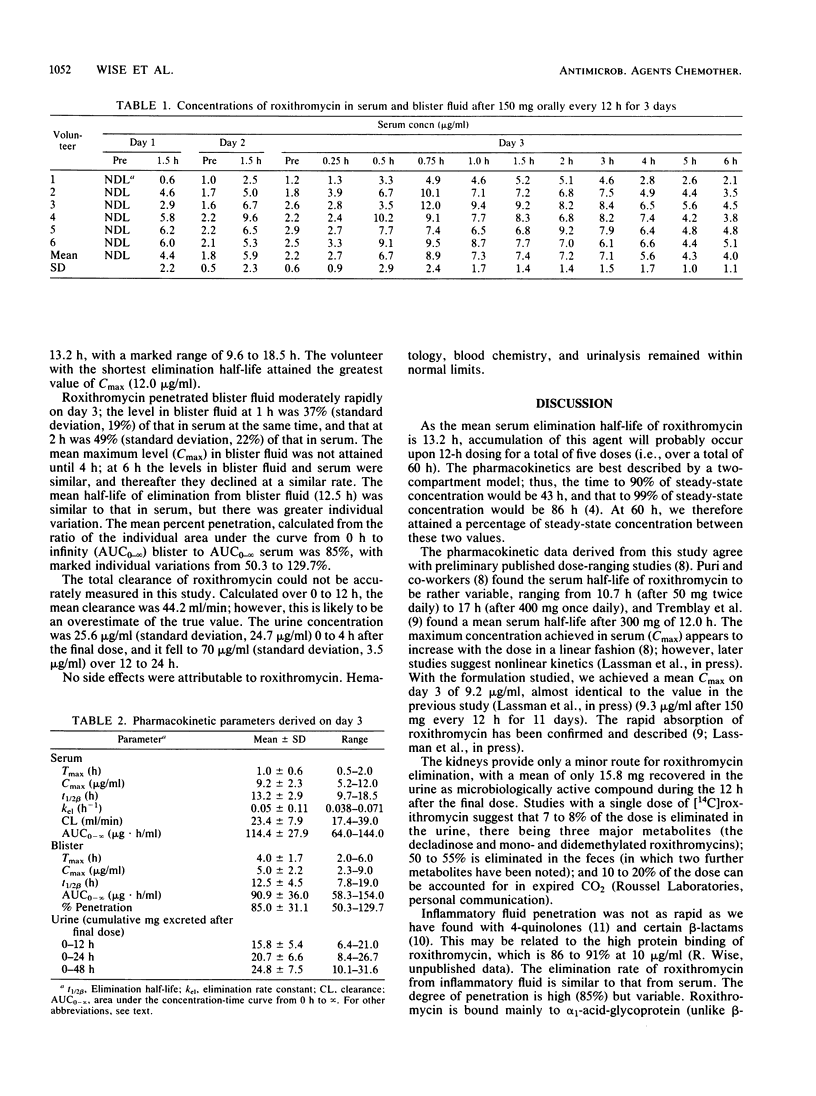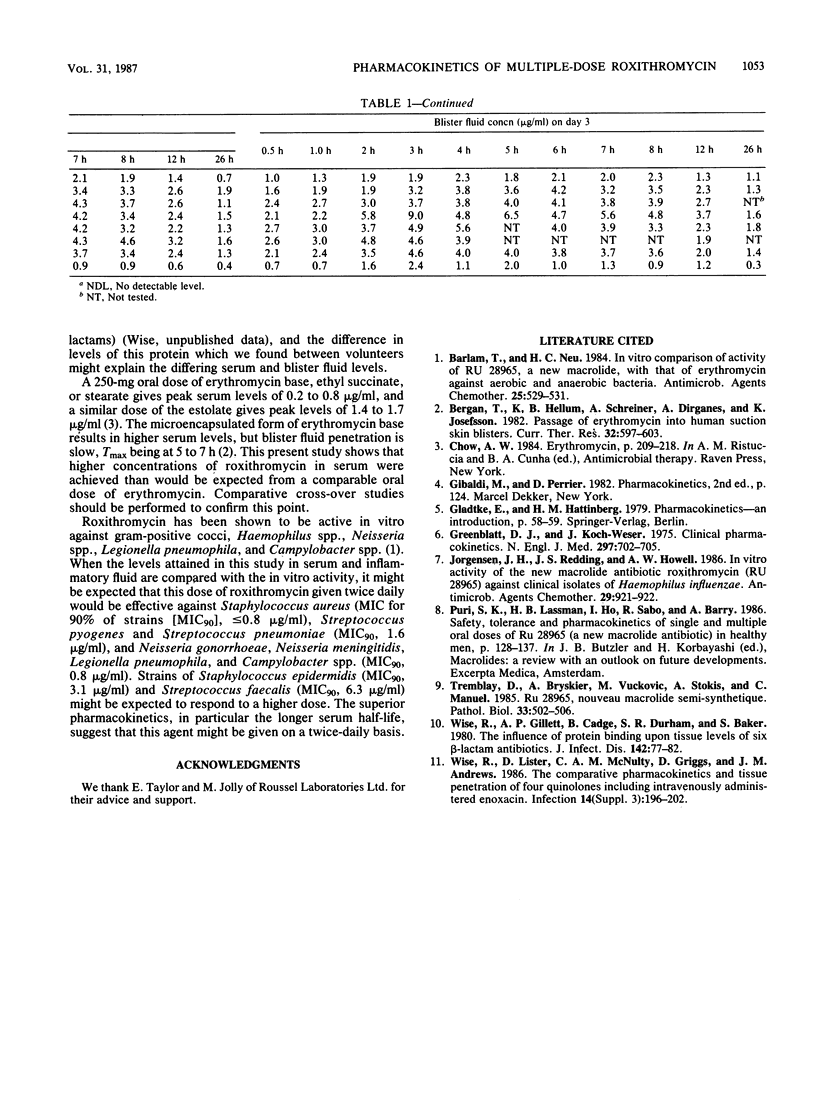Abstract
The pharmacokinetics of the macrolide roxithromycin (RU 28965) were studied during and after administration of 150 mg every 12 h for 3 days (five doses) in six volunteers. The concentrations in serum, blister fluid, and urine were measured. Mean levels in serum taken at 1.5 h after the morning dose increased from 4.4 micrograms/ml on day 1 to 5.9 micrograms/ml on day 2 and 7.4 micrograms/ml on day 3. The mean serum and blister fluid elimination half-lives on day 3 were 13.2 and 12.5 h, respectively. Roxithromycin penetrated blister fluid well; the mean percent penetration (as measured by the ratio of areas under the curve) was 85%. After the final dose, a mean of 10.5% of that dose was recovered in 12 h as microbiologically active compound.
Full text
PDF


Selected References
These references are in PubMed. This may not be the complete list of references from this article.
- Barlam T., Neu H. C. In vitro comparison of the activity of RU 28965, a new macrolide, with that of erythromycin against aerobic and anaerobic bacteria. Antimicrob Agents Chemother. 1984 Apr;25(4):529–531. doi: 10.1128/aac.25.4.529. [DOI] [PMC free article] [PubMed] [Google Scholar]
- Greenblatt D. J., Kock-Weser J. Drug therapy. Clinical Pharmacokinetics (first of two parts). N Engl J Med. 1975 Oct 2;293(14):702–705. doi: 10.1056/NEJM197510022931406. [DOI] [PubMed] [Google Scholar]
- Jorgensen J. H., Redding J. S., Howell A. W. In vitro activity of the new macrolide antibiotic roxithromycin (RU 28965) against clinical isolates of Haemophilus influenzae. Antimicrob Agents Chemother. 1986 May;29(5):921–922. doi: 10.1128/aac.29.5.921. [DOI] [PMC free article] [PubMed] [Google Scholar]
- Tremblay D., Bryskier A., Vuckovic M., Stockis A., Manuel C. RU 28965, nouveau macrolide semi-synthéthique. Biodisponibilité et profil pharmacocinétique après administration par voie orale. Pathol Biol (Paris) 1985 Jun;33(5 Pt 2):502–506. [PubMed] [Google Scholar]
- Wise R., Gillett A. P., Cadge B., Durham S. R., Baker S. The influence of protein binding upon tissue fluid levels of six beta-lactam antibiotics. J Infect Dis. 1980 Jul;142(1):77–82. doi: 10.1093/infdis/142.1.77. [DOI] [PubMed] [Google Scholar]


